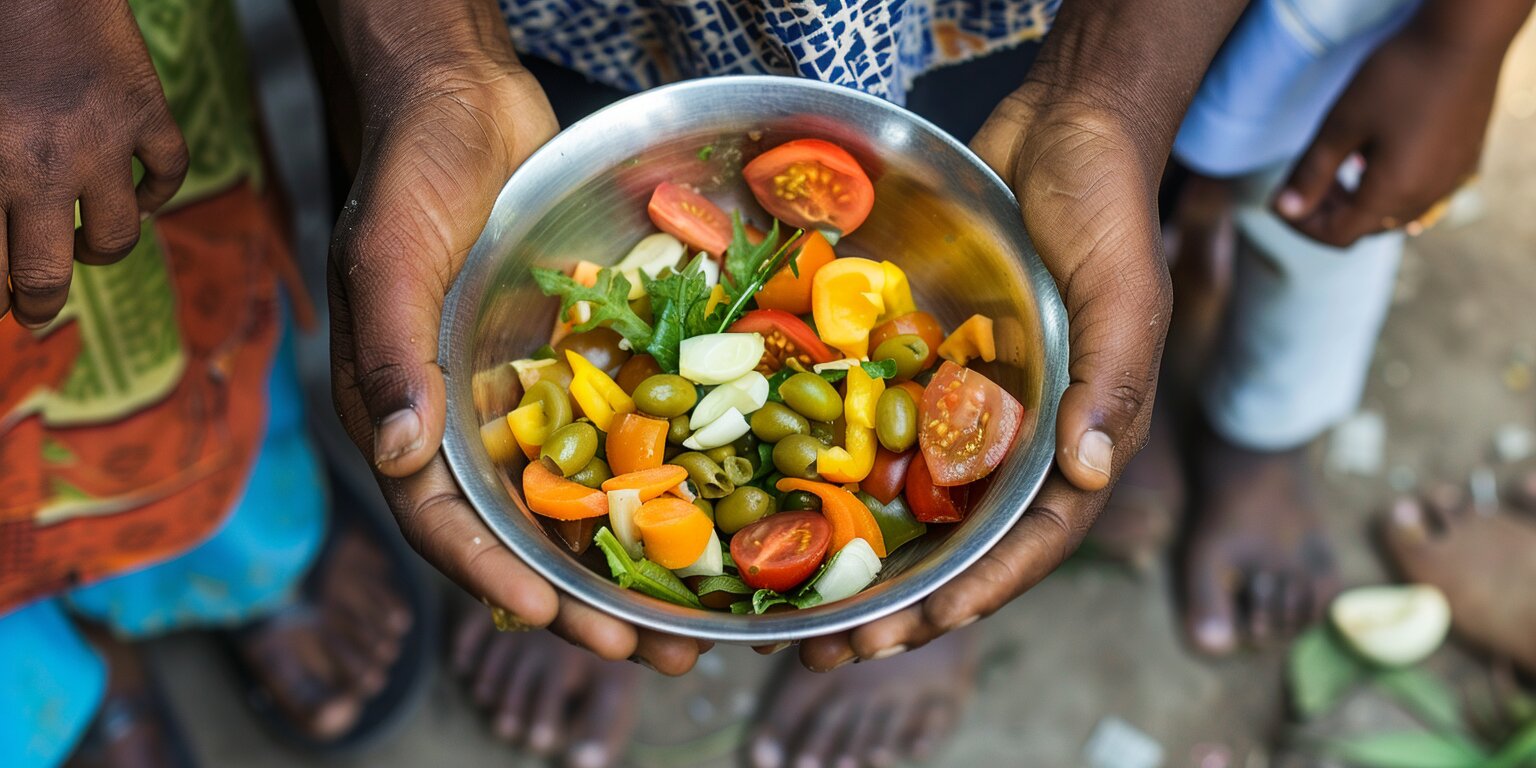When crisis situations strike, one of the most immediate and pressing concerns is ensuring food security for affected populations. The availability of nutritious meals becomes a critical aspect of survival during emergencies, making emergency food assistance and hunger relief programs indispensable. In this article, we will explore the significance of crisis food security, the role of humanitarian assistance in addressing hunger, and the various initiatives implemented globally to combat food scarcity in times of crisis.
Understanding Crisis Food Security
In times of crisis, ensuring food security becomes a paramount concern. Crisis food security refers to the availability, accessibility, and utilization of food during emergency situations. Various factors contribute to food insecurity in times of crisis, including natural disasters, conflicts, and economic instability.
During a crisis, food scarcity becomes a pressing issue, making it essential to identify and implement effective remedies and solutions. One of the primary aims is to ensure that affected populations have access to nutritious and sufficient food to meet their dietary needs.
Factors Contributing to Food Insecurity during Emergencies
- Natural Disasters: Events like hurricanes, floods, and droughts can devastate agricultural systems, leading to crop failure, livestock losses, and disruption in food production and supply chains.
- Conflicts and Displacement: Armed conflicts and forced displacement often result in disruption of livelihoods, loss of income sources, and limited access to food markets, exacerbating food insecurity.
- Economic Instability: Economic crises and inflation may lead to food price volatility, making it difficult for vulnerable populations to afford nutritious food items.
Remedies and Solutions to Combat Food Scarcity in Crisis Situations
To address crisis food security, various strategies can be implemented:
- Emergency Food Distribution: Timely and targeted distribution of food aid to affected populations can help meet immediate nutritional needs in crisis situations.
- Agricultural Support: Providing farmers with seeds, tools, and training can enhance food production and restore agricultural systems affected by the crisis.
- Income Generation: Supporting income-generating activities and livelihood diversification can help vulnerable communities regain economic stability and improve access to food.
- Nutrition Programs: Implementing nutrition interventions, such as supplementary feeding programs for children and pregnant women, can help combat malnutrition in crisis settings.
- Resilience Building: Investing in long-term resilience-building measures, such as early warning systems, climate-smart agriculture, and social safety nets, can enhance communities’ ability to withstand future crises.
By understanding the concept of crisis food security and implementing effective remedies and solutions, it is possible to combat food scarcity and alleviate the burden of food insecurity during emergencies. The next section will explore emergency food assistance programs and their role in addressing crisis food security.
Emergency Food Assistance Programs
In times of crisis, emergency food assistance programs play a vital role in addressing the issue of food security. These programs are designed to provide immediate relief to individuals and communities affected by emergencies and disasters, ensuring they have access to essential nutrition.
Organizations around the world have implemented various initiatives and strategies to tackle the challenges of food insecurity during times of crisis. These programs aim to not only provide immediate food relief but also to promote long-term solutions to combat hunger and build resilience in vulnerable communities.
Key Initiatives and Strategies
- Food Distribution: Emergency food assistance programs often involve the distribution of essential food items, such as grains, pulses, and canned goods, to ensure individuals have access to nutritious meals.
- Mobile Food Banks: In some cases, mobile food banks are deployed to reach remote and affected areas, providing on-the-ground support and delivering food to those in need.
- Cash-Based Interventions: Cash transfer programs are increasingly being used as a means of emergency food assistance, allowing individuals to purchase food according to their specific dietary needs and preferences, thereby promoting dignity and choice.
- Nutrition Education: Many emergency food assistance programs incorporate nutrition education components, empowering individuals with the knowledge and skills to make informed choices about their dietary intake and overall health.
- Sustainable Solutions: In addition to immediate relief, these programs focus on implementing sustainable solutions to address food insecurity in the long term. This includes supporting local agricultural practices, promoting community-led initiatives, and strengthening social safety nets.
Emergency food assistance programs are critical in alleviating hunger and providing essential nutrition during times of crisis. By addressing immediate food needs and implementing sustainable solutions, these programs contribute to the overall goal of achieving food security for all.
Ensuring Nutrition in Disaster Relief
In times of crisis, ensuring proper nutrition is of utmost importance in disaster relief efforts. Addressing the nutritional needs of affected populations can be challenging due to the limited availability of food and the disruption of supply chains. However, it is crucial to prioritize nutrition to safeguard the health and well-being of individuals in these situations.
The Challenges of Providing Adequate Nutrition
During emergencies, the risk of food insecurity increases significantly, leading to malnutrition and other associated health issues. Limited access to nutritious food, lack of clean water, and inadequate sanitation facilities further exacerbate the problem. Displaced populations, including vulnerable groups such as children and pregnant women, are especially susceptible to the negative impacts of malnutrition.
Furthermore, disaster-affected areas often lack the infrastructure necessary for food preparation and storage, making it difficult to ensure safe and nutritious meals. The urgency of immediate relief efforts often prioritizes quantity over quality, with limited emphasis on the nutritional content of the food provided.
Strategies and Interventions
To address these challenges and ensure proper nutrition in disaster relief, various strategies and interventions can be implemented:
- Emergency Nutrition Assessments: Conduct assessments to understand the nutritional status of affected populations and identify specific needs.
- Nutrition Education: Providing education on proper nutrition and hygiene practices to promote healthy eating habits and prevent malnutrition.
- Supplementary Feeding Programs: Establishing programs to provide additional nutrients and essential supplements to vulnerable groups, such as children and pregnant women.
- Food Fortification: Adding essential vitamins and minerals to staple foods to improve their nutritional value.
- Supporting Local Food Production: Promoting agricultural activities and supporting local farmers to enhance the availability of fresh and nutritious food.
Collaboration between humanitarian organizations, local authorities, and community members is essential for the successful implementation of these strategies. By prioritizing nutrition in disaster relief efforts, we can mitigate the long-term impacts of food insecurity and promote the health and resilience of affected populations.
Global Efforts to Alleviate Hunger in Crisis Situations
In the face of crisis food security, famine response efforts and hunger relief programs play a critical role in providing assistance to vulnerable populations. Across the globe, collaborative initiatives and partnerships are being formed to address the urgent need for sustainable solutions in times of emergency and disaster.
Various organizations, including non-governmental organizations (NGOs), governmental bodies, and international aid agencies, are actively working together to combat food insecurity and alleviate hunger in crisis situations. These efforts aim to provide immediate relief and long-term support to affected communities.
Key Global Initiatives
- World Food Programme (WFP): The WFP, one of the leading organizations in hunger relief efforts, focuses on delivering lifesaving food assistance in emergencies. Its rapid response mechanisms ensure that affected populations have access to nutritious food during crises.
- United Nations International Children’s Emergency Fund (UNICEF): UNICEF plays a vital role in providing essential nutrition, clean water, and medical support to children affected by crisis situations. The organization works in collaboration with various partners to ensure the well-being and development of children in emergency settings.
- Food and Agriculture Organization (FAO): The FAO works towards building resilience in agriculture and rural livelihoods to prevent and mitigate crisis food security situations. It assists communities in improving their food production, promoting sustainable farming practices, and enhancing their capacity to withstand future emergencies.
Partnerships for Sustainable Solutions
- Public-Private Partnerships: Collaborations between governments, businesses, and non-profit organizations are instrumental in addressing crisis food security. These partnerships leverage resources, expertise, and networks to ensure efficient and effective responses to hunger relief efforts.
- International Aid Coalitions: International aid coalitions, composed of multiple humanitarian organizations, unite their efforts to provide comprehensive responses during crises. Through shared knowledge, resources, and coordination, these coalitions aim to maximize impact and reach more communities in need.
These global efforts emphasize the importance of collective action in addressing crisis food security and ensuring that no one is left behind. By pooling resources, knowledge, and expertise, famine response efforts and hunger relief programs make a tangible difference in the lives of those affected by emergencies, offering hope and sustenance even in the most challenging circumstances.
Summary
In conclusion, addressing crisis food security is of utmost importance in ensuring the well-being and survival of vulnerable populations during emergencies. The provision of humanitarian assistance plays a crucial role in mitigating hunger and providing immediate relief to those affected by disasters and crisis situations.
Throughout this article, we have explored the concept of crisis food security and the various initiatives undertaken to combat food scarcity in times of emergency. We have seen how emergency food assistance programs and hunger relief efforts strive to provide essential nutrition and support to those in need.
Furthermore, it is essential to recognize the global efforts being made to alleviate hunger during crises. Collaborative initiatives and partnerships are being formed to establish sustainable solutions that address the root causes of food insecurity and promote long-term resilience.
In conclusion, by prioritizing crisis food security and bolstering humanitarian assistance, we can significantly reduce the devastating effects of hunger during emergencies. It is imperative that we continue to work together to ensure that no one goes hungry, even in the face of crisis.



